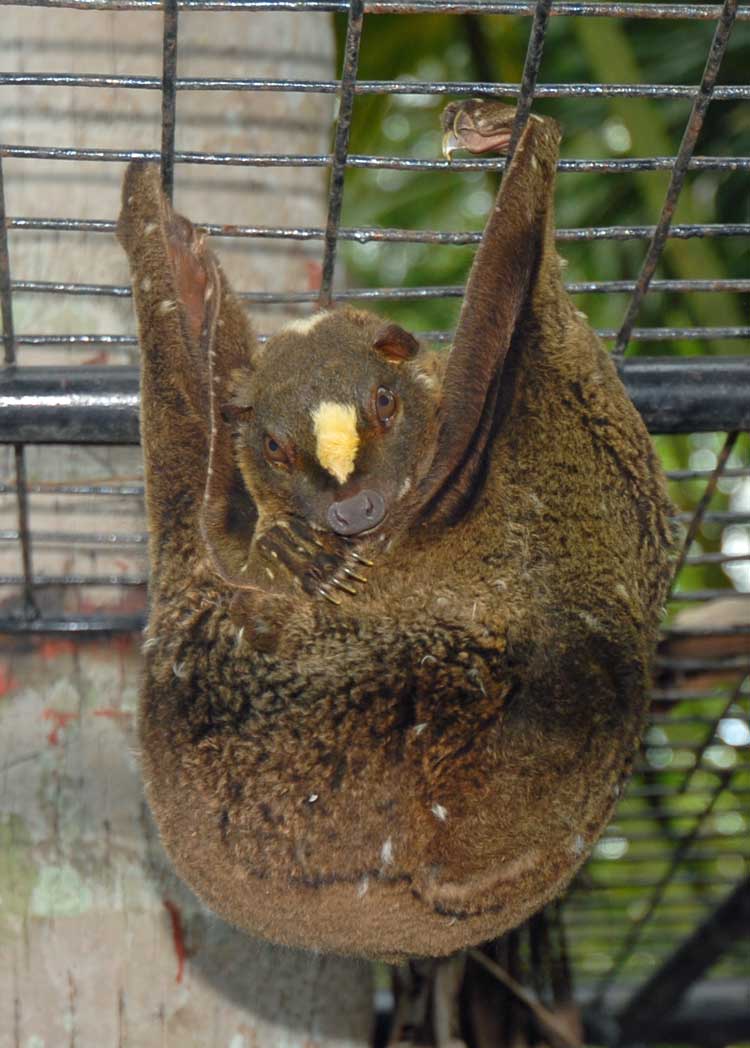Cladus: Eukaryota Name Cynocephalus volans (Linnaeus, 1758) Type locality: Philippine Isls. Synonyms * Lemur volans Linnaeus, 1758
* Cynocephalus volans on Mammal Species of the World.
------ The Philippine Flying Lemur (Cynocephalus volans) is one of two species of flying lemurs, the only two species in the family Cynocephalidae. The Philippine Flying Lemur is endemic to the Philippines. Its population is concentrated in the Mindanao region and Bohol. Characteristics An average Philippine Flying Lemur weighs about 1 to 1.7 kilograms and is 14 to 17 inches long. It has a wide head, small ears and big eyes. Its clawed feet are large and webbed for fast climbing and for gliding. Its 12-inch tail is connected to the forelimbs via a patagium. This membrane helps it glide distances of 100 meters or more, useful for finding food and escaping predators such as the Philippine Eagle. [1] Its 34 teeth resembles that of a carnivore but the Philippine Flying Lemur eats mainly fruits, flowers and leaves. It is nocturnal and stays in hollow trees or cling on dense foliage during daytime. The female Philippine Flying Lemur usually gives birth to one young after a two-month gestation period. The young is helpless and attaches itself to its mother's belly, in a pouch fashioned from the mother's skin flaps. Behavior 1. ^ Gonzalez, J. C., Custodia, C., Carino, P. & Pamaong-Jose, R. (2008). Cynocephalus volans. In: IUCN 2008. IUCN Red List of Threatened Species. Downloaded on 30 December 2008. Source: Wikispecies, Wikipedia: All text is available under the terms of the GNU Free Documentation License |
|


